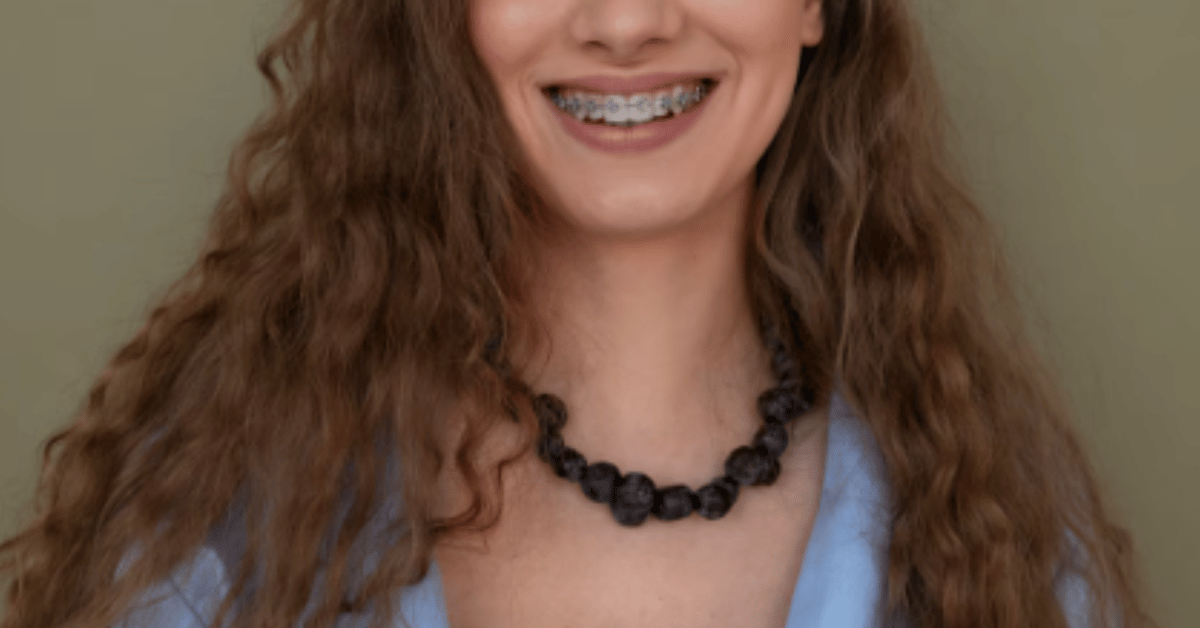Silver braces are one of the most recognizable orthodontic treatments, blending both tradition and reliability in the field of dental care. For decades, these braces have helped millions of patients, both young and adult, correct misaligned teeth, improve oral health, and boost confidence with lasting results. Unlike clear aligners or ceramic options, silver braces are often praised for their strength, cost-effectiveness, and versatility in treating complex dental issues. In the first 100 words, it is important to note that silver braces are metal-based orthodontic devices designed to gradually shift teeth into proper alignment. They use stainless steel brackets attached to each tooth, connected by archwires, which orthodontists adjust periodically to apply steady pressure. This makes them especially effective for complicated cases that may not respond well to clear aligners. Patients who choose silver braces often value their proven effectiveness, predictable results, and the ability to customize appearance with colorful elastic bands, turning a medical necessity into an expression of personal style.
The popularity of silver braces continues in today’s orthodontic market not merely out of tradition but also because of advancements in materials and design. Modern stainless steel used in these braces is lighter, more refined, and less intrusive than earlier versions. Orthodontists have refined the process to make adjustments less painful and outcomes more efficient, creating a treatment option that balances both function and accessibility. At the same time, silver braces remain less expensive compared to clear ceramic or lingual braces, making them an approachable choice for families and individuals considering orthodontics. They are, in many ways, the foundation of orthodontic care: durable, reliable, and adaptable to nearly all dental needs. Patients curious about silver braces today are not simply revisiting an old standard but are instead looking at a treatment option that has evolved with new technology and continues to compete with more modern alternatives.
The History and Evolution of Silver Braces
Orthodontics as a practice has existed in some form for centuries, with early methods involving crude wires and bands designed to move teeth. Silver braces, however, entered the orthodontic field prominently in the 20th century with the introduction of stainless steel brackets. Before this innovation, gold was often used for dental appliances due to its flexibility and resistance to corrosion, but the cost was prohibitive. The adoption of stainless steel in the 1960s marked a turning point, offering an affordable and durable material that transformed orthodontic accessibility for the average family. Silver braces became the standard option for patients worldwide, democratizing the possibility of a straighter smile.
The design of these braces has undergone significant refinement. Early models were bulky and uncomfortable, with wires that required frequent, sometimes painful tightening. Today, silver braces use slimmer brackets, heat-activated wires, and precision-engineered components that reduce discomfort while accelerating treatment. The evolution reflects not just material advancements but also a shift in how orthodontics integrates aesthetics with healthcare. Patients now can personalize their braces, choosing colored elastics or subtle silver tones to match their preferences, making them a functional and even fashionable accessory during treatment. This adaptability underscores why silver braces remain popular even in a world filled with clear aligners and invisible alternatives.
How Silver Braces Work
The mechanism of silver braces is relatively straightforward but remarkably effective. Each tooth is fitted with a small stainless steel bracket bonded to its surface using dental adhesive. A metal archwire connects these brackets, and orthodontists adjust this wire periodically to apply controlled pressure. Over time, this pressure gradually shifts teeth into proper alignment, correcting overcrowding, gaps, and bite irregularities. Elastic ligatures, often available in multiple colors, are placed around the brackets to hold the archwire in place, allowing for a level of personalization that appeals particularly to younger patients.
One of the reasons silver braces remain a gold standard for orthodontics is their versatility. They can treat cases ranging from mild misalignment to severe jaw irregularities. Unlike clear aligners, which rely on patient compliance and may struggle with complex movements, silver braces do not depend on user discipline; once attached, they continuously work toward the desired alignment. Additionally, advances such as nickel-titanium wires have allowed for gentler but more consistent forces, minimizing discomfort while maximizing efficiency. The process may last from 18 months to three years depending on the severity of the case, but patients consistently report that silver braces provide predictable results when other options fall short.
Advantages of Silver Braces
Patients often ask what sets silver braces apart from alternatives like ceramic braces or clear aligners. The advantages are clear and worth exploring in detail. Silver braces are generally more affordable, making them accessible to a wide range of individuals, particularly families with multiple children requiring orthodontic care. They are also known for durability; stainless steel brackets resist damage and are less likely to fracture compared to ceramic. For patients with complex dental issues, such as rotated teeth or severe overbites, silver braces are frequently the most effective option.
Another major advantage lies in customization. Younger patients often enjoy changing the color of elastic bands at each appointment, adding a playful and expressive element to treatment. Adults, on the other hand, can opt for neutral tones that make braces less noticeable. Importantly, silver braces allow orthodontists to exert precise control over tooth movement, which is vital in complex cases. Comfort has also improved significantly, with modern braces featuring smoother edges and lighter wires that reduce irritation. In short, silver braces offer a combination of affordability, durability, versatility, and improved comfort, ensuring they remain a mainstay in orthodontics despite the rise of more discreet solutions.
Common Concerns with Silver Braces
While silver braces are effective, patients often raise concerns about aesthetics, comfort, and maintenance. The most common worry is their visibility, as stainless steel brackets are more noticeable than ceramic or lingual braces. For teenagers, this may become a point of self-consciousness, though many embrace the opportunity to customize elastic colors and treat braces as an accessory. Adults, however, may prefer subtler solutions, which is why ceramic or clear aligners have gained traction.
Another issue patients mention is discomfort, particularly in the early stages of treatment. Adjustments can cause soreness as teeth shift, and brackets may irritate the inner cheeks or lips. However, orthodontists often provide relief wax and recommend strategies to minimize discomfort. Maintenance is also a key concern. Braces require careful cleaning to prevent plaque buildup around brackets, and certain foods must be avoided to prevent damage. Sticky candies, hard nuts, or crunchy snacks can dislodge wires or break brackets. Yet, with proper oral hygiene and dietary adjustments, patients can manage these challenges effectively. As one orthodontist famously remarked, “The biggest obstacle with braces is not the device itself, but the discipline of the wearer.”
Comparison: Silver Braces vs. Other Options
| Feature | Silver Braces | Ceramic Braces | Clear Aligners (Invisalign) |
|---|---|---|---|
| Material | Stainless steel | Tooth-colored ceramic | Clear plastic trays |
| Visibility | Noticeable but customizable with bands | Less visible than metal | Nearly invisible |
| Durability | Very strong, hard to break | More fragile, can chip | Can crack or stain |
| Cost | Generally most affordable | More expensive than metal | Highest cost in many cases |
| Treatment Complexity | Suitable for all cases | Suitable for most, not extreme | Best for mild to moderate cases |
| Maintenance | Requires diligent cleaning | Similar to metal | Must be removed for eating/drinking |
This table illustrates why silver braces continue to dominate orthodontic practice. They combine affordability with unmatched effectiveness, particularly in cases requiring complex tooth movement.
Cost of Silver Braces
The cost of silvers braces varies depending on geography, provider, and complexity of the case. On average, treatment ranges from $3,000 to $7,000 in the United States, often making them the most affordable fixed orthodontic option. Insurance may cover part of the cost, especially for children under specific policies, reducing out-of-pocket expenses for families. Orthodontists also frequently offer flexible payment plans, spreading the investment over the duration of treatment.
Compared with ceramic or lingual braces, which can exceed $10,000 in some cases, silvers braces provide a more accessible option without compromising effectiveness. In fact, for patients requiring extensive treatment, orthodontists often recommend silvers braces precisely because they deliver predictable outcomes at a manageable cost. As one patient noted in a clinic survey, “I wanted straight teeth without financial stress. Silvers braces gave me that balance between affordability and reliability.”
Maintenance and Care for Silver Braces
Caring for silvers braces is essential to ensuring successful treatment and preventing complications such as cavities or gum disease. Patients are advised to brush after every meal, paying close attention to areas around brackets where plaque can accumulate. Flossing requires special tools like floss threaders or orthodontic picks to navigate wires effectively. Orthodontists also recommend fluoride mouthwash to strengthen enamel and protect against decay.
Dietary restrictions are a central part of care. Sticky foods like caramel, hard nuts, and popcorn can damage braces or make cleaning difficult. Patients are encouraged to opt for softer foods and cut crunchy items into smaller pieces to minimize risks. Regular orthodontic visits are equally important; these check-ups allow for wire adjustments and monitoring of progress. With consistent maintenance, patients ensure that treatment remains on schedule and results meet expectations. A common saying in orthodontic offices is, “Braces do the work, but patients decide the success through care.”
Silver Braces in Children vs. Adults
| Age Group | Benefits of Silver Braces | Challenges |
|---|---|---|
| Children & Teenagers | Easy customization with colors, effective for growth-related issues | Higher risk of damage from poor care |
| Adults | Reliable for complex corrections, cost-effective | More concern about aesthetics, professional visibility |
Silver braces cater effectively to both demographics, but expectations and experiences differ. Children often adapt quickly and enjoy personalizing their braces, while adults prioritize effectiveness over appearance.
The Psychological Impact of Silver Braces
Beyond physical alignment, silvers braces can significantly influence self-esteem and social interactions. For children, braces can become a rite of passage, a shared experience that bonds them with peers. Many even look forward to choosing new elastic colors, transforming the treatment into a positive routine. For adults, the experience is more complex. While some initially worry about professional visibility, they often report that the eventual results—straighter teeth and a confident smile—outweigh temporary concerns.
Orthodontists highlight the transformative effect of braces on mental health. A straight smile can boost self-confidence, encourage better oral hygiene, and foster positive interactions in personal and professional settings. As one orthodontic specialist reflected, “We don’t just move teeth; we change lives by giving people the confidence to smile openly.”
Modern Innovations in Silver Braces
Silvers braces are no longer the bulky devices of the past. Technological innovations have made them more discreet, efficient, and comfortable. Self-ligating braces, for example, eliminate the need for elastic bands, reducing friction and shortening treatment times. Heat-activated archwires adjust naturally with body temperature, applying gentler and more consistent pressure. Brackets are now smaller and smoother, reducing irritation inside the mouth.
Digital imaging and 3D treatment planning also enhance precision. Orthodontists can predict tooth movement more accurately, giving patients a clear roadmap of their progress. These advancements demonstrate that silvers braces are not a relic of the past but a constantly evolving treatment option, blending tradition with innovation.
Conclusion
Silver braces remain a cornerstone of orthodontic treatment because of their durability, affordability, and adaptability across all ages and dental complexities. Despite the rise of clear aligners and ceramic braces, silver braces maintain a distinct place in modern dentistry, balancing cost with reliability. They offer predictable results, customizable aesthetics, and proven effectiveness in even the most complicated cases. While concerns about visibility and maintenance exist, advancements in design and technique have minimized discomfort and enhanced efficiency.
For children, silvers braces often represent a colorful and fun stage of growing up. For adults, they are a practical and effective choice that delivers long-term benefits. As orthodontists often say, “The investment is temporary, but the smile lasts a lifetime.” Patients considering orthodontic care should evaluate silvers braces not as an outdated option but as a modern, evolving solution that continues to shape confident smiles worldwide.
FAQs
1. How long do silver braces take to straighten teeth?
Treatment usually lasts between 18 months and three years, depending on the complexity of the dental case.
2. Are silver braces painful?
They may cause mild discomfort during adjustments, but modern designs reduce irritation significantly compared to older models.
3. Can adults wear silver braces?
Yes, silvers braces are highly effective for adults and often recommended for complex cases requiring precise movement.
4. Do silver braces stain easily?
No, the stainless steel material does not stain, though elastic bands may discolor and are replaced regularly.
5. Are silver braces cheaper than other options?
Yes, they are usually the most affordable fixed orthodontic treatment while remaining effective for a wide range of cases.











